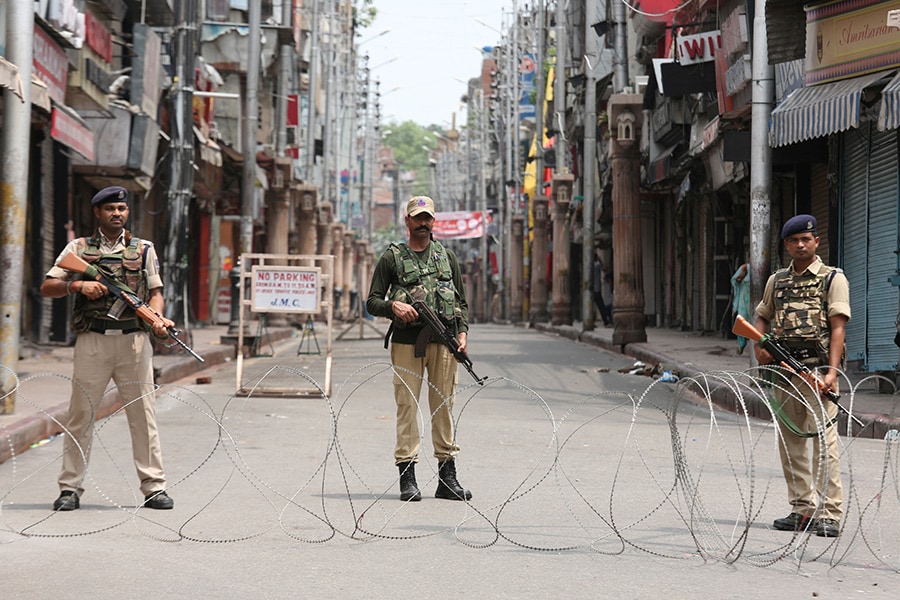
How Jammu & Kashmir was dismantled
What is Article 370, and what does Amit Shah's announcement on the newly bifurcated state, into J&K and Ladakh, mean? A quick explainer
 Image: Mukesh Gupta/Reuters
Image: Mukesh Gupta/Reuters
On Saturday, as fresh troops continued to move into Kashmir in the tens of thousands and Amarnath pilgrims were made to evacuate, former chief minister and vice-president of National Conference, Omar Abdullah, met with Jammu Kashmir Governor Satya Pal Malik, who assured him that the Centre wasn’t making any move to tamper with Article 370.
In less than 48 hours, however, Abdullah and other mainstream political leaders in Kashmir would be placed under house arrest. Home Minister Amit Shah would present the “resolution to revoke Article 370 in Jammu and Kashmir except the first clause 370 (1)” in the Rajya Sabha, while announcing the bifurcation of the state into two union territories: Jammu & Kashmir (with legislature) and Ladakh (directly governed by the Centre).
What is Article 370?
Following the messy accession deal with the reigning monarch of Kashmir, the Union government had included Article 370 in the Constitution on October 17, 1949. This granted the state special status, which exempted it from the Indian Constitution (except Article 1—which mentions J&K among the list of Indian states—and Article 370 itself), permitting the state to draft its own constitution.
“This was not meant to be enduring,” according to Supreme Court lawyer and constitutional expert, K V Dhananjay. “Article 370 (3) states that the President may put an end to it at any time, based on the recommendations of the constituent assembly.”
Coming five years later, Article 35A was incorporated in the Constitution under Article 370 by a Presidential Order. Among other things, it granted the state legislature to define the state’s “permanent residents” and their special rights and privileges. Those not deemed permanent residents would be banned from settling there, buying property, including land, and benefitting from state services like government jobs, scholarships and other kinds of aid.
While many articles have since been introduced under Article 370 to extend provisions of the Indian Constitution to J&K (thus nullifying the effect of the special status, according to observers), Article 35A remained most contentious. Effectively, it restricted the Centre’s role in the state to defence, foreign affairs, finance and communications, and gave the state the authority to decide on its own laws of citizenship, property rights and fundamental rights of its ‘citizens’. So, with Articles 370 and 35A in tandem, J&K had been able to maintain an uneasy autonomy.




